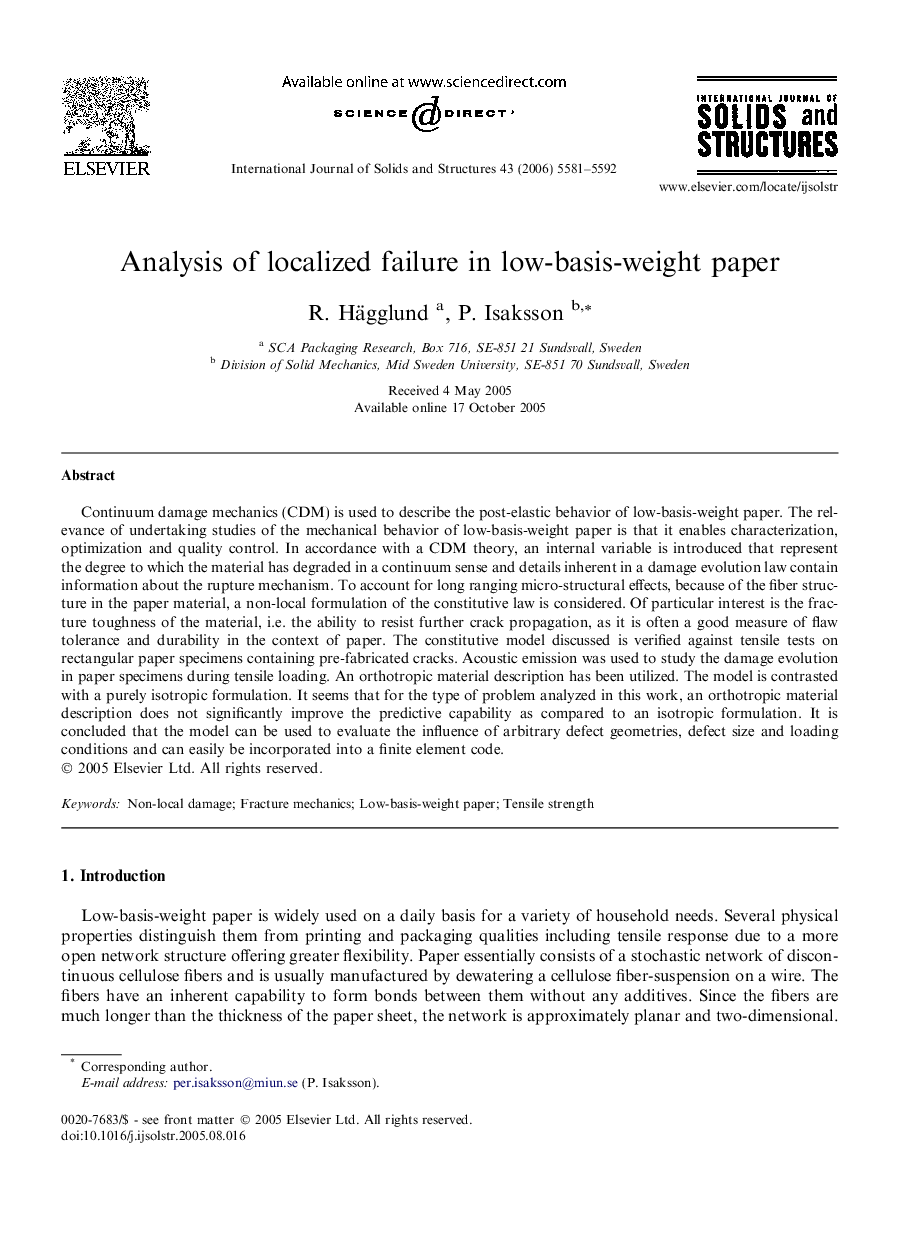| Article ID | Journal | Published Year | Pages | File Type |
|---|---|---|---|---|
| 280202 | International Journal of Solids and Structures | 2006 | 12 Pages |
Continuum damage mechanics (CDM) is used to describe the post-elastic behavior of low-basis-weight paper. The relevance of undertaking studies of the mechanical behavior of low-basis-weight paper is that it enables characterization, optimization and quality control. In accordance with a CDM theory, an internal variable is introduced that represent the degree to which the material has degraded in a continuum sense and details inherent in a damage evolution law contain information about the rupture mechanism. To account for long ranging micro-structural effects, because of the fiber structure in the paper material, a non-local formulation of the constitutive law is considered. Of particular interest is the fracture toughness of the material, i.e. the ability to resist further crack propagation, as it is often a good measure of flaw tolerance and durability in the context of paper. The constitutive model discussed is verified against tensile tests on rectangular paper specimens containing pre-fabricated cracks. Acoustic emission was used to study the damage evolution in paper specimens during tensile loading. An orthotropic material description has been utilized. The model is contrasted with a purely isotropic formulation. It seems that for the type of problem analyzed in this work, an orthotropic material description does not significantly improve the predictive capability as compared to an isotropic formulation. It is concluded that the model can be used to evaluate the influence of arbitrary defect geometries, defect size and loading conditions and can easily be incorporated into a finite element code.
